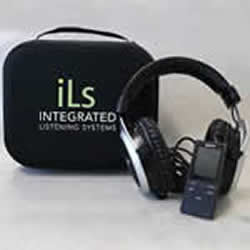Organic Intelligence
Even in somatic psychotherapy circles we still don’t appreciate enough just how fully physical behavior is. The implicit, or body memory, is not at all linear— not one event per behavior. There could be, and likely are, numerous events that might rise to threshold for recollection, and which are associated with any state, any emotion, any behavior.
The Psychology and Neurobiology of Mediation
Elizabeth E. Bader's recent publication, The Psychology and Neurobiology of Mediation (in The Cardozo Journal of Conflict Resolution) is now available for SPT Readers. Elizabeth looks at mediation in terms of the nervous system's response to threat and challenge (what she calls the IDR cycle--inflation, deflation, and realistic resolution). She explores the links between the psychological and neurobiological dimensions of mediation and integrates the work of Stephen Porges (Polyvagal Theory) and Peter Levine (Somatic Experiencing). She notes a distinct feature of mediation is that those involved experience both threat and safety responses simultaneously.
Psycho-Peristalsis in the Shared Body
In this article we offer our experiences working with psycho-peristalsis within the intersubjective field, within the shared body, with curiosity: what potential benefits may arise by using psycho-peristalsis in this way?
Polyvagal Blues
Stephen Porges's Polyvagal Theory has become synonymous with social engagement and our threat-versus-safety survival mechanism. His work continues to evolve, the reach of his content foundational for many studies and methodologies. And now, a song!
A New Twist on a “Therapist’s Tool Box”
I often hear therapists mention their professional “tool box” and the need to access a variety of techniques in client sessions. tool boxA quick Google search showed numerous books that offer “tools” and an assortment of implements for busy therapists; computer/smartphone/tablet applications claim to support therapists’ work with clients, and a plethora of workshops teaching "tools" for therapists to use such as EMDR, EFT, DBT, Reiki, mindfulness, hypnotherapy, somatic focusing, guided meditation, couples relational counseling, and more. Therapists are required to keep abreast of trends, theories, research and application.
The Therapist’s Subjectivity: An Introduction
My name is Yael Shahar, and I am a relational body psychotherapist. With time and by deepening my growth process, I learned how my personality and my complexity can’t be separated from the therapist I am, nor do I wish to separate them.
How can we evaluate the subjective and objective aspects of effectiveness in the therapeutic...
n this article, I propose that there are fundamental limitations to current scientific mainstream methods of writing about therapeutic processes that in fact hinder our ability to both write about our therapeutic process and to learn from other clinicians’ and researchers’ writings.
The Bodynamic Psychotherapy System’s Approach to “Rebirthing” – a Re-orienting Birth Model
We believe that the origin of some problems in life can be traced back to the pre – and perinatal period. Then they can be resolved, and new patterns can be learned and integrated – the old problem disappears and new ways of living can begin. This can happen no matter how old the person is.
The Yin & Yang of Being & Doing in Therapy
The zen master slapped the fan into his palm, “How do you experience this sound?” It was 1982 and it was my first koan in my first zazen. I was way out of my depth here, and I really wanted to have the right answer. “In my mind?” I asked. Sensei only grunted, and slapped the fan again: “How do you experience this sound?”
Distinct traditions encourage the appreciation of fundamental goodness, or “innate enlightenment”— as the Founder of aikido puts it. For those of us in the helping field, we daily face a dilemma, from this perspective of innate enlightenment: on the one hand we aim to recognize and reflect the client’s essential wholeness, and on the other we recognize that the client is asking for a change of some kind, some improvement.
Dancing with Gravity
To be human means to orient vertically; it is our most fundamental human orientation. We live the majority of our lives in a vertical posture, assuming the advantages and challenges of the evolutionary development of a vertical spine. From infancy on we don’t waste any time trying to get ourselves vertical. Place a baby on his stomach and one of his first movements is to raise his head. He doesn’t stop there. As soon as possible he proceeds to push up, sit up, and stand up.
Yet, integrated vertical standing is not a fixed and rigid state. Rather, it is a dynamic stance that makes continual fine adjustments in gravity. This continual stable motion in our posture and internal organs rouses information in the form of emotions, memories, thoughts and sensations.













